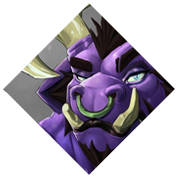

Draven is an excellent pick into Smolder. His early aggression and ability to bully Smolder out of lane make it hard for Smolder to stack. Draven's E – Stand Aside can cancel Smolder's E and prevent him from escaping fights.
Caitlyn's long-range poke and ability to zone Smolder with Yordle Snap Traps allow her to dominate the laning phase. Her range advantage makes it difficult for Smolder to trade or stack effectively.
Jinx’s traps are a perfect follow-up for your support, together you can lock him down for over 2 seconds while you blast him with your high range rockets. Your range similarly to Caitlyn makes it hard for him to trade with you or stack his passive.

Leona is an ideal support against Smolder. Her ability to chain CC with Shield of Daybreak (Q) and Solar Flare (R) allows her to lock down Smolder and prevent him from escaping or re-engaging.
Thresh excels at disrupting Smolder’s mobility. With a well-timed E – Flay, you can pull Smolder out of his E – Ignition Flight, canceling his escape. Look for opportunities to hook Smolder with Q – Death Sentence, but even if you miss and hit a minion, you can still use Flay to stop his flight. Once grounded, follow up with R – The Box to further slow and trap him, giving your ADC the chance to finish him off. Additionally, you can use W – Dark Passage to protect your ADC in case the enemy team tries to dive or focus Smolder.
Nautilus is a strong engage support, but against Smolder, you need to be mindful of his ability to E through walls. If Smolder is close to a wall, he can avoid your Q – Dredge Line by flying through it. To counter this, look to start the fight with R – Depth Charge before following up with your full combo. With an 850-range ultimate, you can easily initiate on Smolder, who only has 550 attack range. Just be careful not to get poked down before engaging, and use W – Titan’s Wrath to absorb damage as you approach him.
Smolder’s early game is his biggest weakness. His short range and lack of early damage make him vulnerable to aggressive laners.
If you’re looking to dominate early and climb the ranks, starting with a fresh level 30+ smurf account can give you a clean slate to perfect your strategies and counter Smolder effectively.
Champions like Draven, Caitlyn, or Samira can punish his weak early laning phase. By applying pressure early and forcing Smolder to farm under turret, you can delay his stacking and scaling.Smolder's E – Ignition Flight gives him great mobility, but it can be canceled by any form of CC. Champions with hooks, stuns, or silences are particularly effective in stopping him from escaping or re-engaging in fights.
Smolder needs multiple rotations of his spells to be effective in a fight, especially his Q. Burst damage champions or assassins can take advantage of his low base health and burst him down before he can stack.
Smolder struggles against long-range poke champions and champions who can maintain distance. His short range and reliance on getting close to land his abilities make him vulnerable to champions who can poke him from afar or zone him from fights.
Smolder’s kit is designed around stacking his passive to increase his power. His primary abilities scale based on the stacks he accumulates, turning him into a hyper-scaling monster if he reaches his key stack thresholds. Here’s a breakdown of his key abilities:
Q – Smoldering Strike: Smolder’s core ability. His Q gains bonus damage as he stacks, and it scales further at specific breakpoints, particularly at 225 stacks, where it unlocks a powerful execute ability. Each stack adds damage, and at higher thresholds, his Q can apply area of effect (AoE) damage and burn effects on enemies.
W – Scorching Burst: This ability slows enemies and serves as a poke tool during the laning phase. It is also useful for disengaging from fights or setting up trades.
Smolder is a scaling ADC who thrives in the mid-to-late game. His power spikes are directly tied to his stack count, making the early game his most vulnerable phase. He relies on farming and poking in the laning phase, aiming to hit critical thresholds for his stacks to become more dangerous. Here’s a breakdown of his phases:
Smolder struggles in the early game. His base cooldowns are high, and he lacks significant damage until he builds up stacks. His short range (550) for an ADC makes him vulnerable to early aggression from long-range champions and poke-heavy lanes.

Once Smolder reaches 225 stacks on his passive, he becomes much more threatening due to the execute mechanic on his Q and AoE damage. His abilities start dealing significant bonus damage, and his kit begins to shine in teamfights.
Smolder is a late-game monster. With three items and a high stack count, he can become a major teamfight threat. His AoE damage combined with his ability to heal and slow with his ultimate makes him hard to deal with.
Smolder's strength lies in his ability to scale, but his early-game weaknesses offer plenty of opportunities for aggressive play. By applying pressure, denying his stacks, and using champions that can exploit his low mobility and range, you can shut Smolder down before he becomes a late-game menace. Keep him from stacking, punish his long cooldowns, and use crowd control to prevent his escape. By doing this, you can ensure that Smolder never reaches his full potential and remains ineffective throughout the game.
